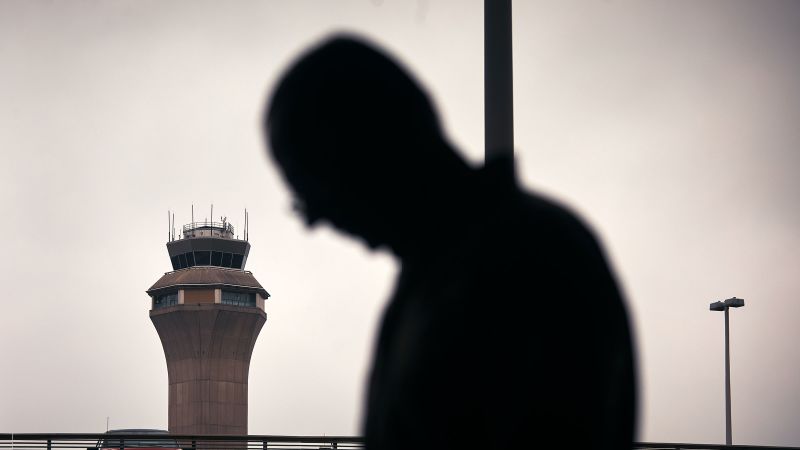Newark Liberty International Airport has endured a tumultuous series of incidents characterized by critical outages in telecommunications and radar, negatively impacting one of the busiest airports in the United States. As delays and cancellations surged, these failures not only provoked frustration among thousands of passengers but raised serious questions about the infrastructure supporting air traffic control at Newark.
On April 28, during one of the most alarming breakdowns, air traffic controllers lost contact with commercial flights for an intolerable duration. Radar screens went dark for at least 90 seconds, while radio communications with pilots were interrupted for about a minute. Though this may seem trivial, such short lapses in communication can lead to disastrous outcomes in the fast-paced world of air traffic control. Following this episode, there were moreover three distinct outages, including a later incident on a Monday where communication failures persisted despite supposed upgrades from the Transportation Department aimed at fortifying the system against such breakdowns.
Compounding the situation is a structural change made last July, wherein air traffic control responsibility over Newark was transferred to a Philadelphia facility. This arrangement placed controllers over 100 miles away from Newark, making them rely heavily on data transmitted via telecommunications lines to obtain situational awareness of Newark’s airspace. A critical flaw highlighted by multiple air traffic controllers acknowledges that commercial telecom lines were never intended for the critical information demands of flight data, creating an inherent risk.
Political figures, including President Donald Trump and Transportation Secretary Sean Duffy, have pointed fingers at the Biden administration for these repeated outages. The transfer of control to Philadelphia, which did take place during the Biden administration, had roots in plans developed under Trump’s presidency. Reports from internal FAA documents indicate that significant preparations for the transfer were already being made leading up to the 2020 election, inappropriate of the current administration.
Secretary Duffy, while defending the transition plan, noted that the Biden administration failed to sufficiently enhance the telecom lines integral to datalink processes. He stated that their neglect to address the underlying infrastructure increased risks to the entire system, remarking that more caution was needed in the system’s buildup.
Many current and former air traffic controllers contend the root issue lies not in the execution of the plan but rather in the plan itself. Concerns voiced by these controllers assert that the Newark facility’s operational setup was flawed from the beginning. A former controller remarked anonymously that the central issue was the use of telecommunications infrastructure built for non-critical purposes to support mission-critical data like radar information.
The disruptions experienced at Newark are part of a larger pattern of safety-related incidents affecting air traffic control across the country. For instance, there was a similar communication failure in the Denver Air Route Traffic Control Center, emphasizing that Newark’s malfunctions are among the most disruptive and politically charged circumstances.
In tracing the plan to shift Newark’s air traffic control to Philadelphia, various documents and interviews with controllers highlight the internal resistance faced from various factions, notably the air traffic controllers’ union. For decades, Newark airport has suffered from staffing shortages, prompting the FAA to explore creative solutions. However, David Grizzle, who served in a high-ranking role with the FAA during the Obama administration, noted that attempts to stabilize staffing at the New York facility have historically been unsuccessful. Using various incentives to encourage staff retention and recruitment, such efforts continue to fall short.
Grizzle explained that the idea to transition operations to Philadelphia emerged within the FAA as a novel approach, aiming to address the persistent staffing problem by relocating controllers to a city with a lower cost of living. Internal documentation supporting the project dates back to February 2020, hinting at the complexities involved in its planning and ensuing discussions.
However, concerns over the feasibly of the transition remained prevalent among controllers. Just before the anticipated shift in airspace control, union representatives articulated serious safety concerns, predicting that delays could lead to dangerous situations due to increased coordination times associated with the move. Despite such resistance, the transition went live in July, with air traffic controllers reliant on remote feeds to stay informed of Newark’s air traffic while stationed over 100 miles away.
The FAA’s decision was soon put to the test as controllers faced numerous outages and breakdowns after the transfer occurred. One critical failure on April 28 sealed the fate of the transition’s reputation when a telecommunications line malfunction rendered controllers unable to communicate fully with aircraft. While the Transportation Department defended the plan itself, it criticized the execution and lack of preventive measures taken after the move.
In conclusion, the Newark Liberty International Airport debacle reflects not just immediate operational failures but encapsulates a broader narrative of sustained challenges in the air traffic control system, impacted by staffing issues and infrastructure inadequacies. As these ongoing complexities reveal themselves, the political blame game diverges attention from the systemic issues that have long plagued air traffic control and threatened passenger safety.



